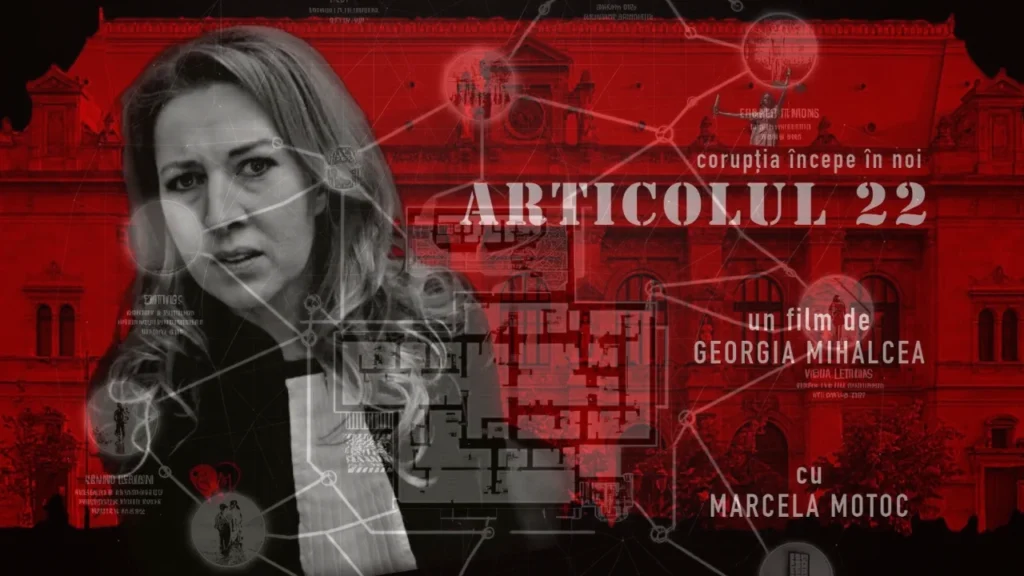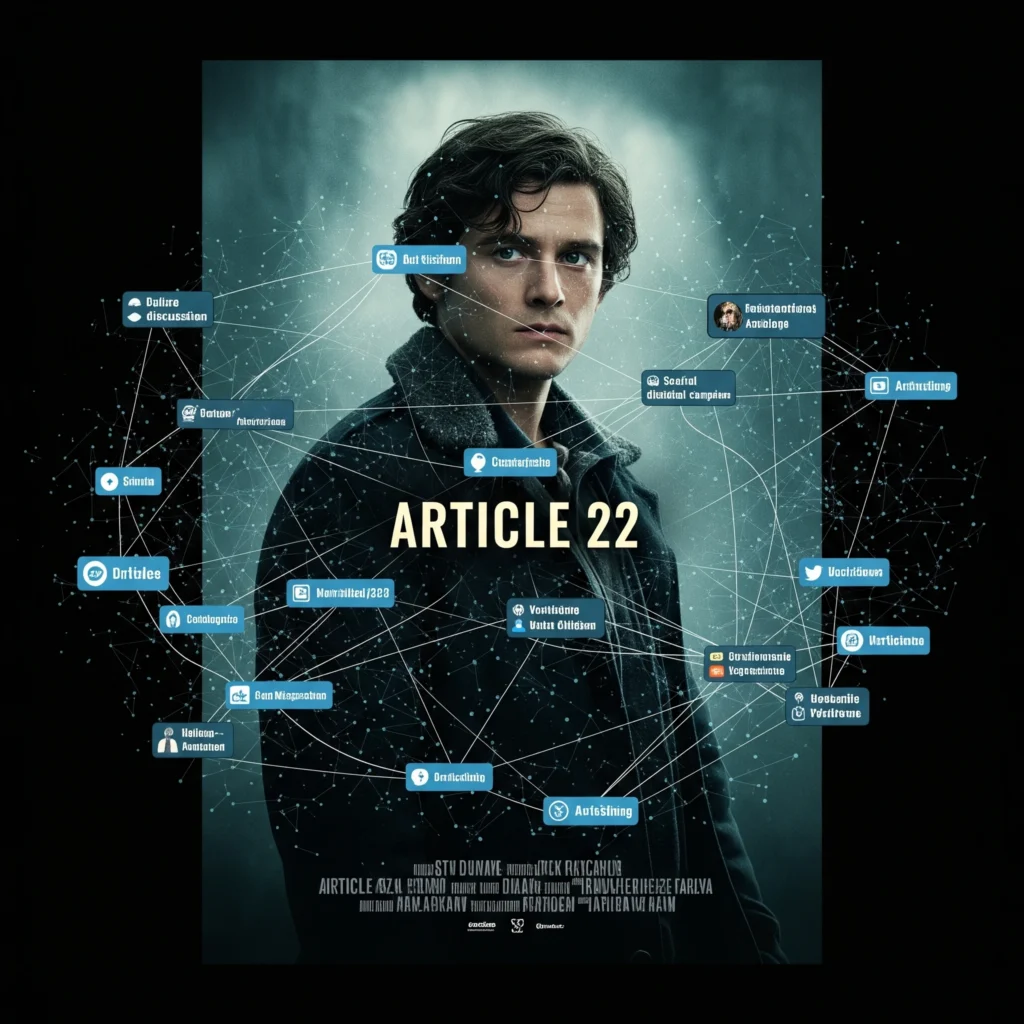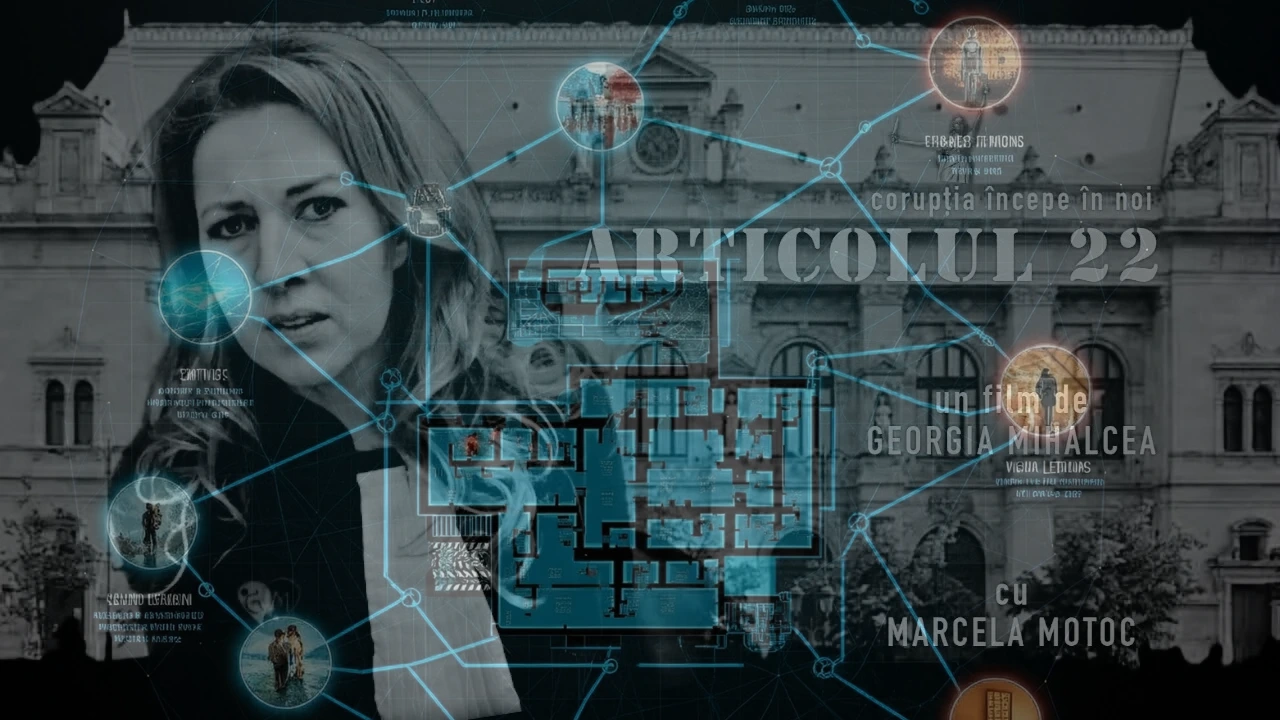‘Article 22 | Justice Calls’: Why a Romanian short film would need a semantic revolution.

Have you ever wondered why, in an era of overwhelming information, some stories stay invisible, even the most powerful ones? For filmmakers and content creators, the challenge is no longer just about creating. It is also about ensuring your work is discovered. Your work must be understood by the right audience in an ocean of data. This is true even for award-winning art films. It applies to educational artworks with profound messages, like the Romanian short legal drama “Article 22: Justice Calls.”
“Article 22: Justice Calls” is a short film I made in 2020 for International Anti-Corruption Day. I created this film to “translate” Article 22 of the Civil Procedure Code (CPC) into cinematic language. It addresses “The Judge’s Role in Ascertaining the Truth.” This resulted in a legal drama that emphasizes social commentary. It also provides civic education on the theme of corruption.
As a filmmaker, I fulfilled my mission: I wrote, directed, and produced a film. But what happens next?
If I stop at this step, the film does not reach its full potential: that of communicating. Most filmmakers do this, hoping for miracles along the way. Furthermore, without a master digital interface, it can’t be found and organically recommended by algorithms. Algorithms do not understand content unless it is defined. To be more specific, it must be granularly defined. This is where the semantic paradigm comes in, connecting physical reality to digital reality.
If I don’t take further steps, the film will gather a few thousand views online. This will happen, as before, from distribution on YouTube, Facebook, and TikTok. Yet, its potential is much greater, and its purpose extends beyond the boundaries of cinematography and education through film. Therefore, it would be a good idea to capitalize on the concept’s strengths. Especially since it also had been an official selection at the category “Best Indie Producer for a Short Film” at the IPIFF film festival that year.
To achieve this, I must shift my focus from film production and cinema. I need to move to the sphere of semantics. Additionally, I must explore the domains governing the visibility and discovery of online media content. Since I produced this film before my doctoral journey, during which I developed a new approach for film production, I am now compelled to reverse engineering and see what I can do retroactively.
Major streaming platforms like Netflix and Amazon undergo this “post-factum torture” at considerable costs. They do this through a process they call content enrichment. This process is distinct from content refinement for search engines (SEO), the digital marketing approach. But most importantly, it is a process where the filmmaker is not present. Technologists, algorithms, and other types of cinema professionals mainly carry out this process. This leads to the risk of fragmenting the film’s cinematic identity and altering the creative intention and vision.
The semantic core of the film: Beyond the law, a universal human drama.
Article 22 of the CPC is not just an ordinary law stipulation; it addresses a fundamental problem of ethics, justice, and systemic corruption, with direct human and economic implications. Although the film is set in Romania, its theme is universal.
This thematic depth will allow for richer demonstrations and approaches of a semantic strategy. It includes a richer metadata scheme and a wider audience reach. There will also be more generous annotations. Additionally, it fosters a richer connection in meaning between production, distribution, consumption, and archiving. It also bridges the gap between algorithms and the public.
The semantic goal of “Article 22: Justice Calls”

With this in mind, the film “Article 22: Justice Calls” is not merely a cinematic adaptation of a legal text, but an incisive exploration of the judge’s role in ascertaining the truth in civil proceedings, as defined by Article 22 in the law.
The film highlights the critical imbalance between the spirit and the letter of the law. This imbalance is due to judges’ tendency to “cover themselves with paperwork” instead of requesting essential evidence. They can do this even against the will of the parties, as the law allows. This practice can fuel the phenomenon of ‘corrupt judgments’ and injustices.
This theme underscores the profound impact a judicial decision can have on a person’s life and business. It transforms legal complexity into a matter of social justice. It also touches on civic integrity.
The semantic goal of the film is precisely to illuminate these critical nuances and to make accessible to the general public the profound implications of this legal article, which, in Romanian justice, seems to have been forgotten. The film’s context is unique, and the goal is to exploit this uniqueness to the fullest.
Vision for extending the film’s meaning: A case study with digital literacy potential
Therefore, I need to think broader. To achieve this, I must revisit the intention I had when I wrote and directed the film.
- Directing intention: The imbalance between spirit and letter is central to the creation process.
- Semantic goal: translating this moral and legal dilemma into a visual and narrative form, then allowing semantic annotation of every aspect of this “translation.”
Furthermore, if I were to treat the film as educational material for legal and civic education, as well as a case study to help students and creatives acquire essential digital competencies in audiovisual digital communication and to show how “semanticization” can clarify and communicate complex social and ethical issues, here’s how I will broaden the film’s scope and its network of connections:
- Role of Law Students: They could annotate the film with references to jurisprudence. These annotations might illustrate abuses related to Article 22. They could also include proposed legislative or practical solutions to remedy the imbalance and link scenes to real cases.
- Role of Social Sciences/Ethics/Philosophy Students: They could annotate the film with concepts of judicial ethics, the sociology of corruption, moral dilemmas, theories of justice.
- Connecting to “Brand Films” and “Famous Films”:
- Legal Films: “The Verdict,” “Erin Brockovich,” or “A Few Good Men” – all explore the tension between legality and morality, truth, and procedure. I could show how metadata would link “Article 22” to these films through common themes such as “the fight for truth in court,” “abuse of power,” “individual vs. systemic justice.”
- Brand Films and CSR Campaigns: I could find examples of brand campaigns or corporate cinematography that focus on transparency, integrity, social responsibility, or civic education. The film could be semantically connected to these campaigns, demonstrating how an independent media product can amplify a brand’s message, adding context and substance to themes of integrity and moral values.
- Connecting with Legal Entities: law firms, non-governmental organizations, the Bucharest Bar Association, and other entities and professionals in the legal field interested in legal communication, legal marketing, and other related subjects, with the aim of helping them see what cinematography can do for this field and what a brand film can do for their branding.
- Connecting with public and private schools, high schools, and universities concerned with film education, legal education, civic education, and similar subjects. This connection is important not only for viewing and debating the film but also for teaching students how to make films of interest to them on legal and social topics and how to think about them from a digital perspective from the moment of creation.
Through this approach, the film would implicitly become a case study in digital literacy for cinematic works, including filmmakers and teachers, without requiring them to go through a long learning curve on a distinct path.
The film communication modeling strategy: First semantic steps
Now that I have outlined a vision, I can start sketching out key actions I should take to shape a communication strategy for the film, as well as a content strategy for its promotion and an editorial plan. Principally, I should follow these steps:
1. Controlled Vocabulary: Identifying key concepts and specific terminology. I achieve this by constructing a scheme (structured lists) of narrative metadata for:
- legal terms (CPC, Article 22, legal principles, legal entities, law schools, etc.);
- actors and involved parties (judge, Marcela Motoc);
- actions (trial, litigation, judgment);
- locations in the film and their connection to real-world places;
- emotions and states (justice, injustice, guilt, innocence, inner conflict);
- directing intentions and key scene messages.
This controlled vocabulary, which I will exemplify in another article, will provide a solid basis for tagging the short film’s scenes, characters, themes, images, and concepts, both for informational enrichment and for better discovery and understanding by its diverse audience.
Practically, through the film’s controlled vocabulary, I could transform a short film into a semantically rich learning object, as well as a communication guide for promotion and building the film’s website.
Thus, “Article 22” no longer remains just a 5-minute short but it becomes a collection of interconnected concepts, each with precise annotations and links to relevant resources, facilitating the deep and multidisciplinary exploration of the addressed themes, as well as its online visibility and discovery.
2. Information Processing and Organization:
- Main Categories: legal domain, actors and roles, locations and places, abstract concepts, processes and actions, social and ethical aspects, emotional aspects, film production.
- Thesaurus (Film Vocabulary): a list of keywords for each main category, the relations between them, including erroneous terms (to create visibility for the film even when users don’t know exactly what they’re looking for).
- Institutions and Organizations: for contexts and tagging.
- Target Audience: for filtering and personalizing content.
- References and Connections: famous films, brand films, other works and artworks.
3. Normalizing the Film’s Vocabulary through SEO: It is very important to also understand what the film’s potential audiences are searching for, with what words and what are the search volumes for the terms I have included in the vocabulary. This helps in aligning my intention with the search intent of online users (informational, navigational, transactional, commercial), and also to normalize the terms.
Thus, SEO techniques for keyword research and competitive analysis for the terms used help me successfully navigate this part of the process. It is not necessary to be a SEO expert, but only to know a few basic principles to get an idea of how to diversify the film’s semantic vocabulary and how to particularize it in the most relevant way to the film’s content and my editorial objectives, to help it reach a wider audience.
I may or may not implement myself this strategy, but it would definitely act as a communication guideline for marketing experts, communicators and content enrichment professionals further down the supply chain.
Therefore, after semantically enriching the film with granular metadata, I now optimize it for search engines and recommendation systems, broadening the range of keywords and, consequently, multiplying the access points to the film. For an easier understanding, we may call this approach semantic marketing.
Conclusion
In conclusion, the experience with “Article 22: Justice Calls” demonstrates that producing an impactful film is only half of the equation. The other half, equally crucial in the digital age, is ensuring that the film is discovered, understood, and leveraged to its full potential.
By adopting a proactive semantic approach, we not only fulfill our mission as filmmakers to communicate, but we transform our work into an interconnected resource, capable of generating dialogue, education, and long-term visibility. This strategy empowers filmmakers to control their narrative in the digital environment, ensuring their creative vision remains intact and accessible.
To fully understand the challenges and opportunities discussed, I invite you to watch the short film ‘Article 22: Justice Calls’.
Stay tuned for my upcoming articles in the Synapse Media Lab, where I will detail step-by-step the creation of the controlled vocabulary and the practical implementation of this strategy for “Article 22,” but also discuss more about the potential applications of the structured approach of filmmaking.
If you are passionate about the intersection of art, justice and technology, and believe that a structured approach to visibility can bring added value to your projects, I am open to collaborations and discussions. We can connect to explore how my Visibility Architecture Workshop can provide practical solutions.

Leave a Reply